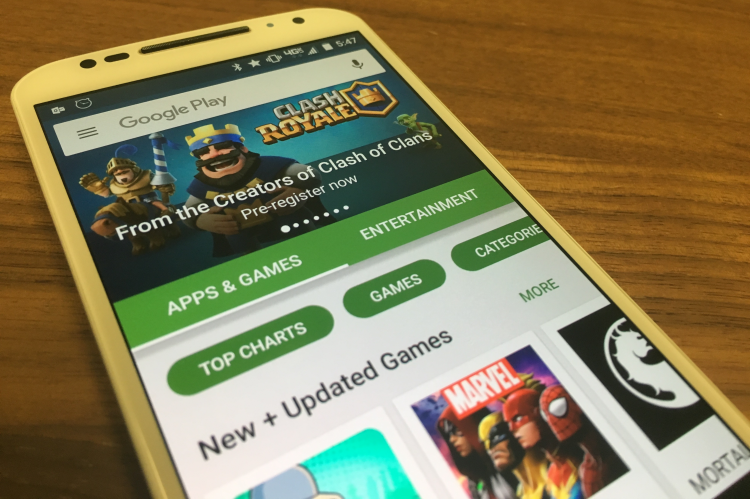Google announced last week an upcoming change to its Android mobile phone operating system that threatens the future of its own mobile app store, Google Play. And the resulting shift is likely to threaten Apple’s App Store, too. It is likely that in 2018 or 2019, we will no longer perceive a difference between a website and a mobile app, and we’ll wonder how Apple and Google ever managed to control the market for mobile apps so completely.
The new feature on Android lets users “install” web pages from the Chrome web browser so that, for all practical purposes, they look just like apps downloaded from the Google Play store. This is a significant improvement in a feature that has been available from the earliest days of smartphones — the iPhone launched in 2007 with the ability to “save to Homescreen,” creating shortcuts for your favorite websites, but it never took off.
To pay or not to pay
For developers hoping to create native app-like experiences from these “homescreen apps,” there has never been anything like feature-parity between apps downloaded from app stores and those saved from websites. Even when the homescreen apps have been technically adequate for the job, the poor usability around installation and poor visibility on phones has been a barrier to adoption (particularly on Android where a homescreen app doesn’t even make it into the main “apps” menu). So homescreen apps have always been the poor cousin of native apps, making native apps the only viable choice for most companies, despite bold examples like the Financial Times pursuing the homescreen app route since 2011.
One of the major stumbling blocks for many businesses adopting homescreen apps has been the lack of integration with Android Pay and Apple Pay, the built-in payment technologies on Android and iOS. These take the pain out of mobile payments by allowing customers to verify an online transaction using their fingerprint, rather than having to type in card details over and over again. Last summer, Apple announced it was integrating Apple Pay into Safari, which would allow creators of ordinary websites to take advantage of the technology. Google made a similar announcement in the autumn.
An app by any other name
As a customer of a personal finance service, there are some key tasks you’re looking to achieve: track your money, make payments, securely upload and receive documents. For many businesses, the recent integration of Android Pay and Apple Pay into homescreen apps fills a significant gap. Given that mobile is a significant driver of traffic to e-commerce websites, anything that makes it simpler to complete a purchase in the moment will be rapidly rolled out. And with last week’s Google announcement closing the usability gap between native and homescreen apps, app stores will be less important when it comes to rolling out better mobile experiences to our customers.
Everyone likes a prediction, so here is mine: The next six months are going to see major brands shifting their attention to developing and releasing mobile web apps and canceling planned updates to their native apps. By the end of 2018, the mainstream consumer mindset will have shifted enough to make the oligopoly of Apple’s App Store and Google Play seem like ancient history.
Jonathan Lister is CTO at online pension manager PensionBee. You can follow him on Twitter at @jayfresh.
VentureBeat's mission is to be a digital town square for technical decision-makers to gain knowledge about transformative enterprise technology and transact. Learn More

